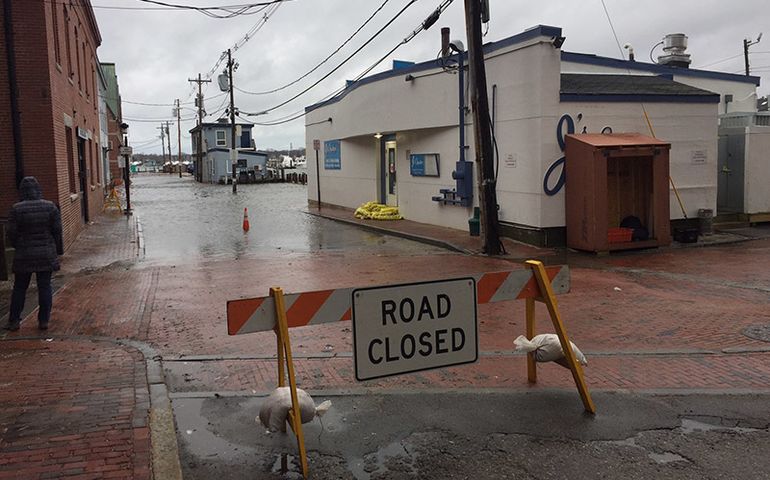Report card gives Maine's home-building industry a failing grade for hurricane safety
 File Photo / Peter Van Allen
The Portland Pier was closed as a 2018 nor'easter flooded many of the city's waterfront streets.
File Photo / Peter Van Allen
The Portland Pier was closed as a 2018 nor'easter flooded many of the city's waterfront streets.
The 2021 hurricane season officially began Tuesday, and an industry group says Maine’s building codes and builders get a failing grade in readiness for the monster storms.
The Insurance Institute for Business & Home Safety has released a report card on states along the Atlantic and Gulf coasts, evaluating each state for its codes, enforcement and contractor licensing related to hurricane resistance.
Maine earned a grade of “poor,” with a score of 55 on a 100-point scale, in the IIBHS “Rating the States,” published Tuesday.
Among the 18 states that were evaluated, Maine ranked No. 13, the sixth-worst. New York scored 60 and placed just ahead of Maine, and New Hampshire was No. 14 with a score of 48. Delaware was at the bottom.
The nonprofit IIBHS, based in Tampa, Fla., uses 47 criteria in its evaluation, and has conducted it every three years since 2012. Maine received a score of 54 in 2018 and 55 in 2015, but has fallen nine points from a score of 64 in 2012.
Most of the other states have improved their scores since that time. Massachusetts, which went from a score of 87 to 78, is the only state whose IIBHS score has dropped as sharply as Maine’s.
The 2021 report noted that Maine has statewide building standards that have been updated to meet the International Residential Code, but municipalities with fewer than 4,000 residents don’t have to follow them. The institute also criticized the lack of code-specific education for certifying building inspectors, and that licensing is required for plumbing and electrical contractors but not for other trades workers.
"Building science has advanced significantly over the last decade, providing cost-effective strategies to reduce the impact of Mother Nature. Modern building codes are core to addressing the known risks of high winds and heavy rain that invariably come with these systems," IBHS Chief Engineer Anne Cope said in a news release announcing the report.
"Strong adopted and administered codes apply the latest science and engineering knowledge to protect homes and families from the catastrophic damage hurricanes bring and make our coastal communities more resilient for the future."
While most hurricanes track out to sea before hitting Maine, the state has borne the brunt of a few. Hurricane Bob was downgraded to a tropical storm by the time it reached Maine in 1991, but still killed three people. The state has also been affected by major hurricanes in 1985, 1960 and 1954. The infamous hurricane of 1938 killed nearly 700 people from New York to Maine.
And there's evidence the danger is growing.
Scientists predict a more active hurricane season than usual in the Atlantic Ocean this year. The federal government’s National Hurricane Center last month forecast that between 13 and 20 named storms will occur in 2021, with six to 10 of them becoming hurricanes. The average number of named storms over the past three decades has been 14, but there have been higher numbers than that in recent years. Last year’s hurricane season was the most active on record, with 30 named storms and 14 hurricanes.
This year has already seen a pre-season named storm, Tropical Storm Ana, which skirted Bermuda on May 22. Future storms will go by the names of Bill, Claudette, Danny and 17 others.
Mainebiz web partners
The National Climate Assessment (NCA) states that there has been no significant trend in the global number of tropical cyclones nor has any trend been identified in the number of US landfalling hurricanes. Chew on that a little.










1 Comments